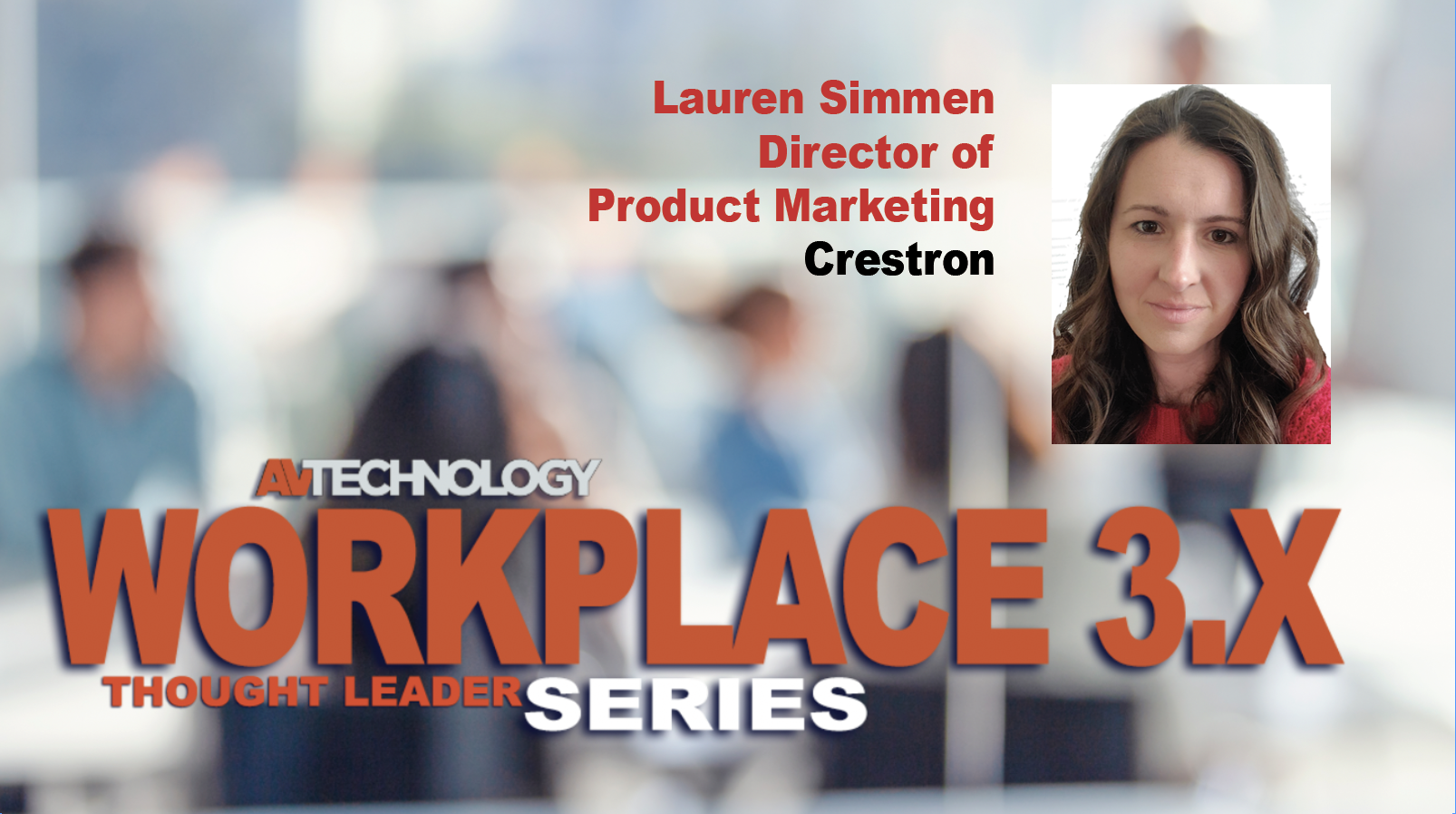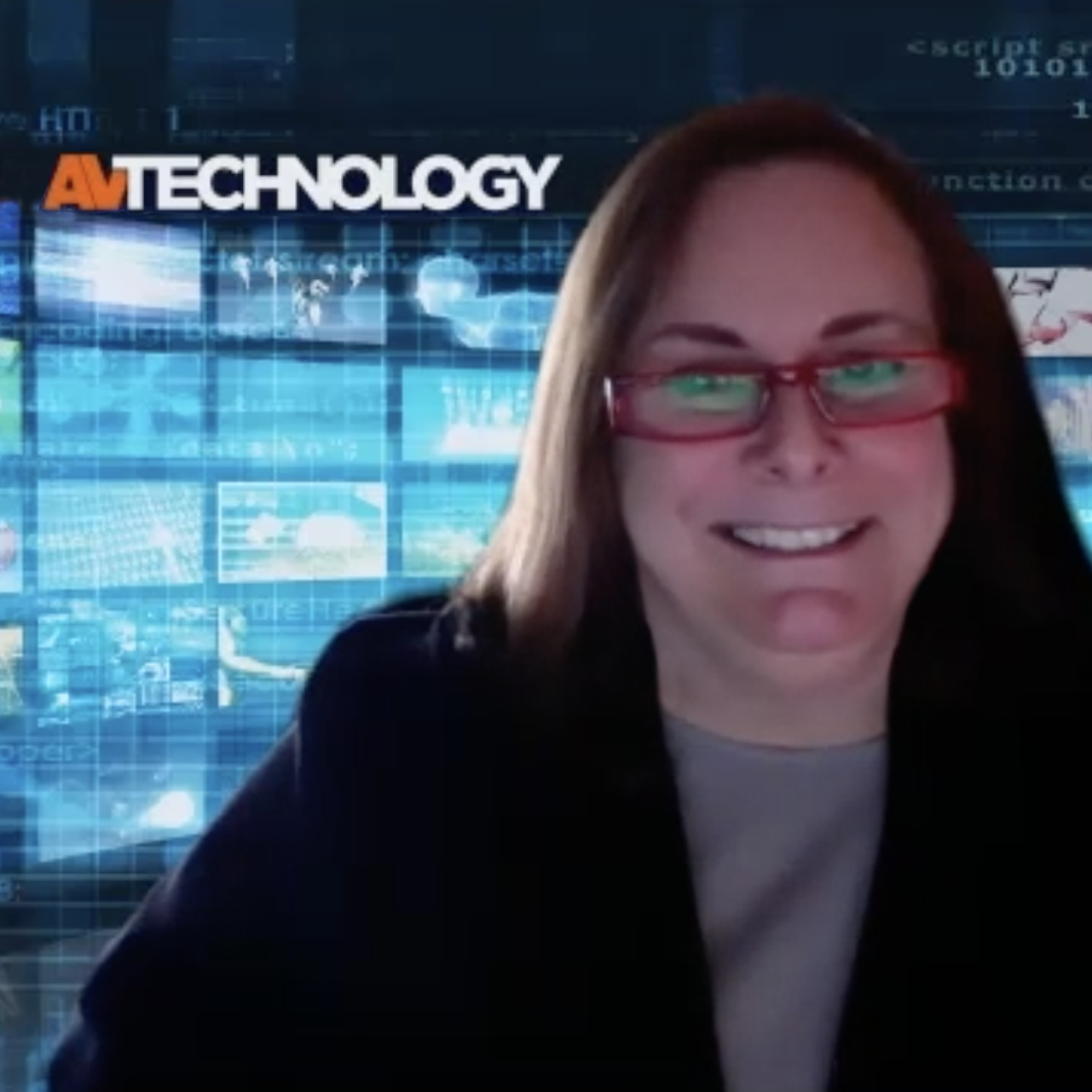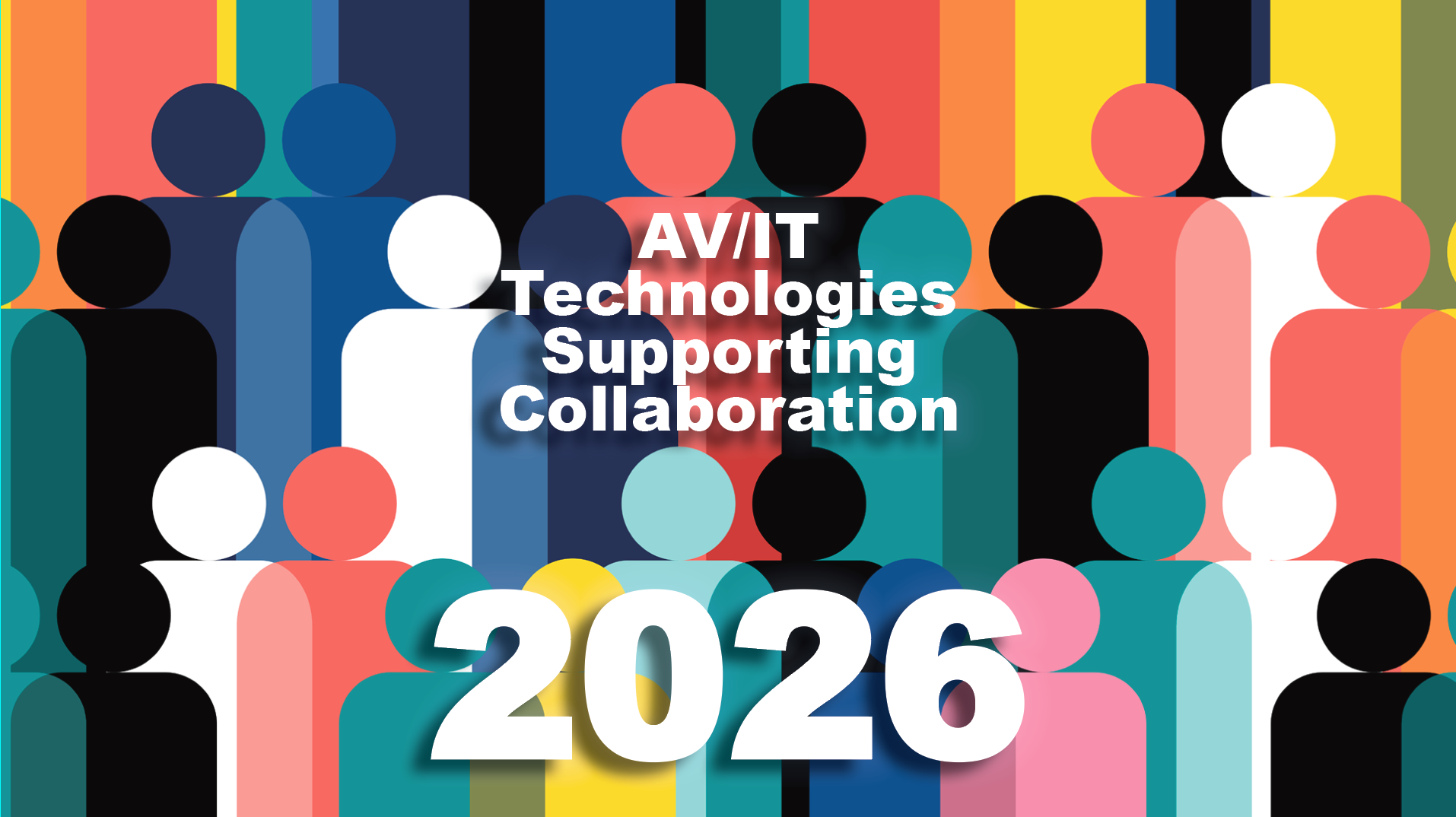On Workplace 3.X: Crestron
Lauren Simmen, Director of Product Marketing at Crestron shares insight for ensuring meeting equity and how to deliver the best collaboration experience regardless of location. Part of AV Technology's Thought Leader Series.

AVT Question: Please share insight and best practices for ensuring meeting equity for all employees and how to deliver the best collaboration experience regardless of location.
Thought Leader: Lauren Simmen, Director of Product Marketing at Crestron
The research that Crestron’s undertaken over the course of the last year has revealed that most businesses have adopted a hybrid model: On any given day, a portion of the workforce is in-office, and a portion is working from home. The constant presence of virtual attendees has informed the way we look at meeting rooms, and some fairly important attributes of those spaces—large and small—should be addressed.
The constant presence of virtual attendees has informed the way we look at meeting rooms, and some fairly important attributes of those spaces—large and small—should be addressed." —Lauren Simmen, Director of Product Marketing at Crestron
The first of those attributes is the right technology. Proper connectivity with enough cameras, mics, and displays gives every meeting attendee an equitable experience. Speaker- and presenter-tracking options are key to the creation of “equal pixel real estate.”
The second attribute to consider is non-traditional room design. Changing the room orientation from “portrait” to “landscape”—putting cameras and displays on longer walls—creates better camera angles. Implementing curved or trapezoidal conference tables can give in-room attendees better sightlines within the room. The use of non-traditional seating design, including soft seating and homey touches (fabrics, drapery, plants, and so on,) can further help make the commute worth it. (A plus: Soft surfaces mitigate the unpleasant sound reverberation that can make for poor audio in the modern office, with its hard angles.)
The third attribute is proper lighting and shading. Backlit in-room attendees, washed-out display screens, and a host of other visual issues can be addressed when the right lighting and shading is in place.
And finally, controls should have an intuitive interface. They should be easy-to-use—and even automated when possible. The trick here is to mirror the at-home and in-office experience so the transition is seamless.
A daily selection of features, industry news, and analysis for tech managers. Sign up below.

Cindy Davis is the brand and content director of AV Technology (AVT). She was a critical member of the AVT editorial team when the title won the “Best Media Brand” laurel in the 2018 SIIA Jesse H. Neal Awards. Davis moderates several monthly AV/IT roundtables and enjoys facilitating and engaging in deeper conversations about the complex topics shaping the ever-evolving AV/IT industry. She explores the ethos of collaboration, hybrid workplaces, experiential spaces, and artificial intelligence to share with readers. Previously, she developed the TechDecisions brand of content sites for EH Publishing, named one of the “10 Great Business Media Websites” by B2B Media Business magazine. For more than 25 years, Davis has developed and delivered multiplatform content for AV/IT B2B and consumer electronics B2C publications, associations, and companies. A lifelong New Englander, Davis makes time for coastal hikes with her husband, Gary, and their Vizsla rescue, Dixie, sailing on one of Gloucester’s great schooners and sampling local IPAs. Connect with her on LinkedIn.
